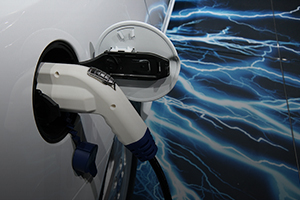Plant-Based Supercapacitors

As electric vehicles become more popular, there’s a growing demand for better power storage technologies that can provide faster recharge times and longer life, while also being more environmentally friendly. Researchers may have found a low-cost, sustainable solution that uses lignin – a natural polymer found in wood fiber that is available in huge quantities as a by-product of paper manufacturing.
The lignin was used to enhance the conductivity of manganese dioxide – another low-cost material that is abundantly available. A mixture of the two was deposited on an aluminum electrode and sandwiched with a gel electrolyte to another aluminum electrode made with activated charcoal.
Unlike a battery, which can take a relatively long period of time to charge, the new device – called a supercapacitor – can charge and discharge in a much shorter period of time. Testing confirmed that the supercapacitor was electrochemically stable, even after thousands of charging cycles. In addition, the specific capacitance of the new device was up to 900 times that of other supercapacitors.
Lightweight and flexible, supercapacitors could be a game-changer for everything from mobile devices to electric vehicles, while reducing our dependence on rare earth elements and the expenses associated with mining and recycling them.
For information: Hong Liang, Texas A&M University, Department of Mechanical Engineering, 100 Mechanical Engineering Office Building, College Station, TX 77843; phone: 979-862-2623; fax: 979-845-3081; email: hliang@tamu.edu; website: https://www.tamu.edu/ or https://today.tamu.edu/2020/09/07/lightweight-green-supercapacitors-could-quickly-charge-devices/